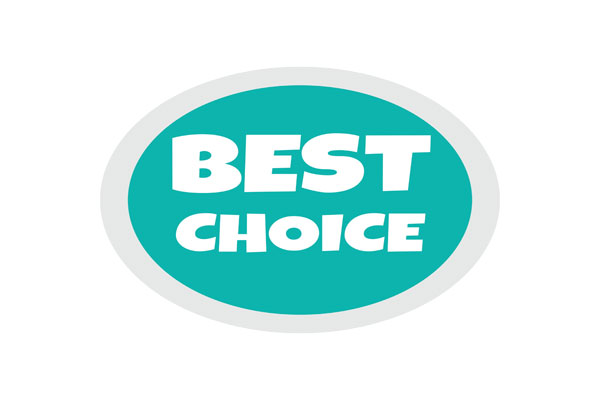Images on your home care website help you get more clients.
Research shows that at least 65% of people learn better with pictures.
And photos help families understand your services faster than words alone.
Build a connection with families looking at your website. Because the images create emotional feelings for them.
Read on to learn the best ways to use images on your website to improve content and leads.
In This Article:
1. Speed Up Images on Your Home Care Website

Website speed affects how leads use your site and how you show up in searches.
Slow pictures cause families to leave your site. But fast websites keep them on your page longer.
Make Images Smaller
Compress your images for web use.
Start by making file sizes smaller without losing how good they look.
Big pictures slow down your whole website.
Small files load faster on all computers. This helps families on phones and tablets too.
Shrink your photo files by 60-80%.
Try to keep images under 100KB for best speed.
Pick the Right File Type
File type choice affects how good images look and how fast they load.
JPEG works best for photos with many colors and details.
PNG works better for simple images with few colors, such as logos.
2. Place Your Home Care Website Photos Correctly

Smart placement of photos on your website makes content easier to read and skim.
Good positioning helps guide families through your web pages.
Pictures in the right spots help tell your message better and keep people on your page longer.
Break Up Text With Images
Create pages that families can read and understand.
Place one photo for every 150-300 words for blog articles. And closer to every 100 words for rest of website content depending on design.
Break up long paragraphs of text with good pictures so leads will not avoid reading your copy.
Put Images in Best Spots
Center your images on the page or place them on the right so words can be on the left. Because English-speaking leads read from left to right.
Draw attention to key messages on your web pages by positioning relevant images near them.
Name Image Files
Help search engines understand the subject of your images through your image file names.
- Limit to around five words.
- Insert hyphens between words.
- Make all the words lowercase.
- Add . then file type to end.
Google’s image guidelines show file name example.
3. Write Alt Text for Pictures in Home Care Content

Alternative text is a sentence or two that describes each image you have on your website.
Search engines read alt text to understand your photos better. Good alt text can help your images show up in search results.
Alt text also helps people with visual impairment understand your pictures. Screen readers speak alt text out loud to help these leads.
Follow Alt Text Guidelines
- Keep descriptions under 125 words for best results.
- Include one keyphrase only if it describes the image.
- Write complete sentences that describe the photo.
- Use normal capitalization instead of all caps.
Avoid Alt Text Mistakes
Never start descriptions with “image of” or “picture of.” These phrases waste valuable space. Plus screen readers already tell users that content is an image.
Focus on describing what leads see in the photo without being too short or too long.
Decorative images, such as a swirling decorative line, should have empty alt text. This stops screen readers from announcing them.
4. Understand Home Care Image Laws

Legal compliance with your website images protects your business from costly violations.
Image laws protect both photographers and leads who visit your website.
Use Licensed or Original Photos
Buy stock photos that offer millions of licensed images for business use.
Create original photos when possible for unique content.
Images found on the internet are copyrighted, so they are illegal to use.
And while AI images may be a cost-effective alternative, you cannot beat the look of real photography and people.
Respect Client Privacy Rights
Protect your company from privacy violations that result in fines or lawsuits. The Health Insurance Portability and Accountability Act (HIPAA) rules require written permission for any patient images.
Consider using models or generic photos instead of real clients.
Obey Website Accessibility
Website accessibility laws protect people with disabilities. These laws require websites to work for everyone.
The most common web access lawsuit is for missing alt text for images. No alt text means people with sight impairment do not know what your photos are about.
Make sure every image includes proper alternative text.
Protect your business against fines for violations.
5. Choose the Right Senior Care Images

Image choice affects how families view your services.
Show your understand their needs and concerns by using the right images.
Match Images for Content
Pick visuals that strengthen your written message.
Because images help older adults and caregivers understand your written copy faster.
Focus on Emotional Connection
Families connect with the emotions depicted in your website photos. And emotional connection brings more clients to your agency.
Pick images that display care and compassion.
Show diverse older adults and caregivers so every lead can identify with your content.
Senior care images should portray dignity and respect for older adults.
Use photos that create positive feelings from leads.
Keep Visual Style the Same
Create a unified visual experience for families. Then your website and blog will look professional and be easy to follow.
Use the same color scheme across your website and for each of your blog articles.
Colors of images should be easy for anyone to view on all types of computers. Test your colors on cellphones too.
Conclusion: Images on Your Home Care Website
Smart image use turns home care websites into powerful marketing tools.
Website speed improvements make sure leads stay engaged with your content longer.
Proper photo placement guides families through your services.
Alt text improves web access for everyone while boosting visibility in search.
Legal compliance protects your business from costly violations and lawsuits.
Thoughtful image selection creates emotional connections with potential clients.
Remember this: increase your business by using the right images in the right places on your website.
Keep reading: Guide to Effective Online Home Care Content


